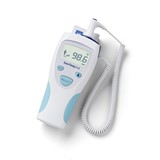Speaking at The Royal College of Pathologists of Australasia’s (RCPA) 11th annual Pathology Update conference at the Sydney Convention Centre in Darling Harbour on the weekend, Prof Hatem Salem of the Australian Centre for Blood Diseases, Alfred Hospital, and Central Medical School, Monash University says the rapidly increasing understanding of the coagulation system has allowed the design of several new drugs with enhanced pharmacokinetics (PK) and pharmacodynamics (PD).
"There has been an increase in the use of anticoagulants for the treatment and prevention of thrombosis over the last two decades," says Prof Salem. "However, there remained a large amount of understanding required for the two most common drugs we’ve been using to treat thrombosis – heparin and warfarin – even though they have been around for over half a century".
"The issue we’ve been facing is the significant levels of morbidity and mortality associated with the use of the two mainstay drugs due to poor PK and PD".
Prof Salem says unpredictable absorption, dose adjustments, food interactions and drug-drug interactions are some of the main factors that have given rise to the need for frequent testing in order to monitor the anticoagulant activity.
"Despite frequent and best monitoring, patients remain in the desired anticoagulation range 60% of the time, but for the rest of the time, they are either over or under-anticoagulated, putting them at risk of bleeding or experiencing recurrence".
"The newly designed drugs, Dabigatran Etexilate, Apixaban and Rivaroxaban, target the two key coagulation enzymes - thrombin and Factor Xa (FXa)."
"The most important and exciting highlights of the new and improved PK and PD of these three drugs are that they have rapid onset of action, allow for the use of a fixed dosage and no routine coagulation monitoring is required.
There are still some unknowns; for example the need to monitor these new drugs in acute situations such as bleeding complications or before urgent surgery and the reversibility of the drugs if bleeding complications arise."
"We continue to discover the potential of the drugs but for now, the oral bioavailability of these drugs has also considerably simplified our approach to prevention and treatment of thrombosis," says Prof Salem.








